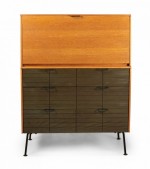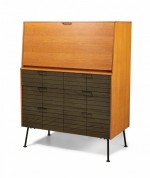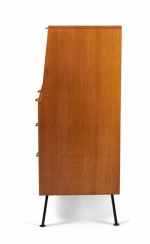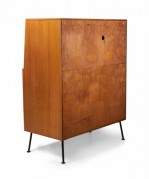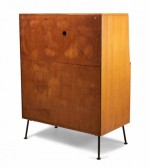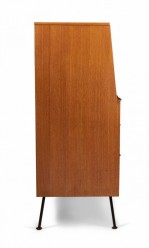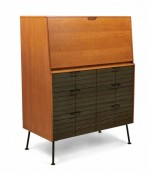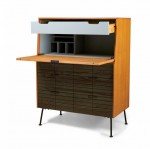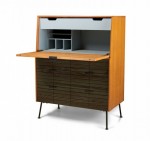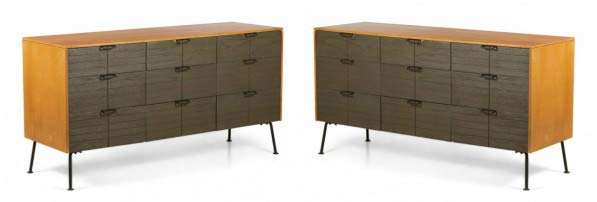Raymond Loewy for Mengel American Mid-Century Fall-Front Walnut and Iron Secretary Cabinets
$15,000 (USD)
Available Qty: 1
Item #: DUF0090
Pair of American Mid-Century fall front secretary cabinets with light walnut cases and a front doors that open to create a desk surface and reveal a light gray or beige painted interior with various storage compartments above a 6-drawer cabinet bottom with dark stained, geometrically incised drawer fronts with trapezoidal iron hardware, resting on four angled iron legs ending in circular feet..
Ships from:
Newel Warehouse
32-00 Skillman Ave
Long Island City NY - 11101
Taxes may apply.
Learn more
See it in Person
Call (212) 758-1970 or Email Us
Raymond Loewy for Mengel American Mid-Century Fall-Front Walnut and Iron Secretary Cabinets
Pair of American Mid-Century fall front secretary cabinets with light walnut cases and a front doors that open to create a desk surface and reveal a light gray or beige painted interior with various storage compartments above a 6-drawer cabinet bottom with dark stained, geometrically incised drawer fronts with trapezoidal iron hardware, resting on four angled iron legs ending in circular feet.
DETAILS
Sku:
DUF0090
Ships From:
New York, NY
Creator:
Raymond Loewy
DIMENSIONS (INCHES)
Width:
36.5"
Height:
47.0"
Depth :
20.0"
Seat Height :
0.0"
INFO
Style:
Mid-Century
Materials & Techniques:
Fabric, iron, metal, upholstered, walnut, wood
Category:
Cabinets & Case Goods
Condition:
One cabinet has a beige interior, one has a light blue-gray interior.
Good; Wear consistent with age and use

About Raymond Loewy
Raymond Loewy (November 5, 1893 – July 14, 1986) was a prominent French-born American industrial designer known for his significant contributions to the field of furniture and decorative arts. He is widely regarded as one of the most influential designers of the 20th century.
Born in Paris, France, Loewy demonstrated an early interest in design and aesthetics. He studied engineering at the University of Paris and later pursued his passion for art and design at the Académie de la Grande Chaumière. His education provided him with a strong foundation in both technical and artistic skills, which would greatly contribute to his success as a designer.
In 1919, Loewy immigrated to the United States, where he quickly established himself as a leading figure in the Read Full Bio



